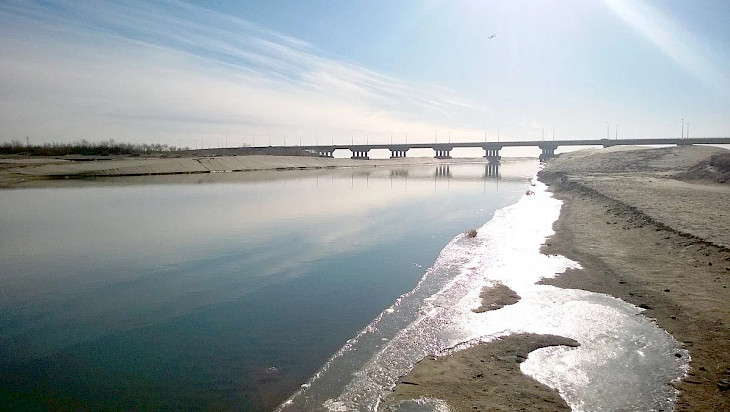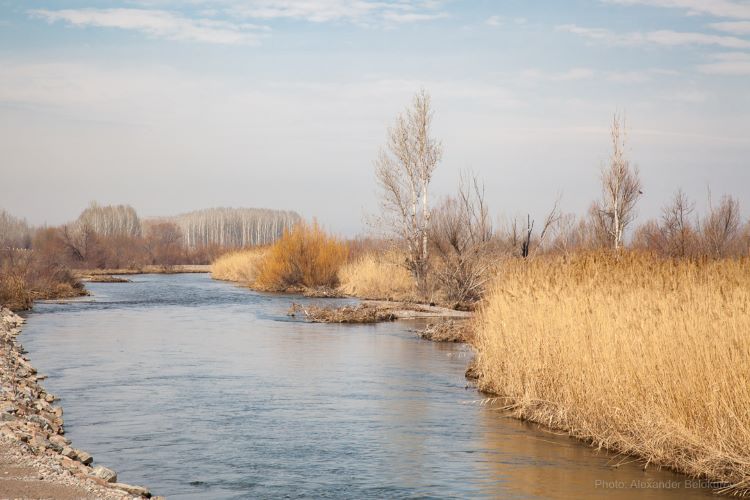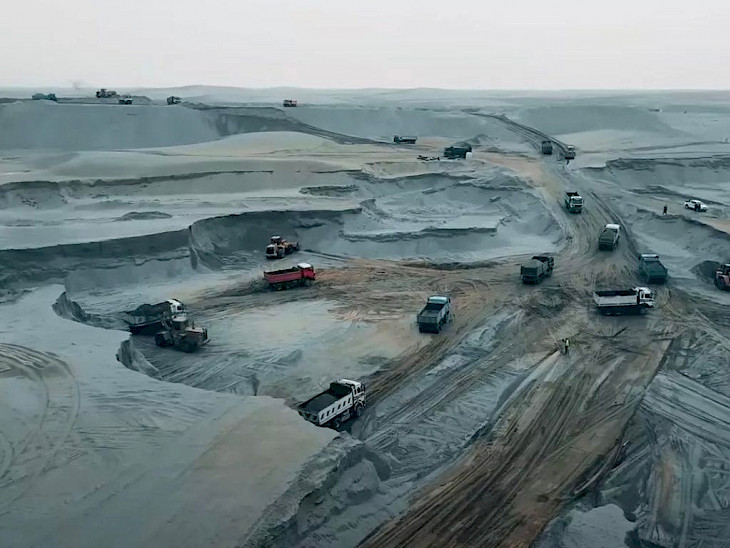
Transboundary Rivers no longer providing the desired volume of water due to a decrease in their flow
Analytical Report
Central Asia annually uses over 60 billion cubic meters of water for irrigation from the basins of the Amu Darya and Syr Darya rivers. This is six times more than the designed capacity of the Nurek Reservoir.
However, in recent years, approximately 70-80% of the water extraction limit is practically used. This is due to Transboundary Rivers no longer providing the desired volume of water due to a decrease in their flow, Asia Plus publishes analyses.
The representatives of Central Asian countries, within the framework of the Interstate Coordinating Water Management Commission (ICWMC), usually gather twice a year – in spring and autumn – to approve water extraction limits from the basins of the two largest rivers in the region, the Amu Darya and Syr Darya.
During the vegetation period (summer), about 56 billion cubic meters of water are used for irrigation from the Amu Darya. Of this, during the non-vegetation period – from October to April – 15.7 billion cubic meters are used.
The total volume of water extraction limits from the Syr Darya during the non-vegetation period for 2023-2024 is 4.24 billion cubic meters.
Also read: Transboundary Water Issue: 2 Gauging Stations opened at Tajikistan-Uzbekistan Border
The Central Asian countries will once again refine the limits and make corresponding adjustments considering the current water management situation at the upcoming 86th session of the ICWMC, which will take place in Kazakhstan in the coming months.
Everything depends on the amount of water that will flow into the Transboundary Rivers. The current winter in the region has been ambiguous, with a warm beginning and a rainy and snowy end in February. This has a positive effect on the snow cover in the mountains, which will fill reservoirs in the summer, providing water for field irrigation.
Therefore, according to experts, the upcoming agricultural season should proceed without significant issues.
How was water used last year?
Last year, a total water extraction limit from the basins of the two rivers – Amu Darya and Syr Darya – was approved at 51.5726 billion cubic meters for irrigation. Of this, the water extraction from the Amu Darya was supposed to be 39.6776 billion cubic meters, and from the Syr Darya – 11.895 billion cubic meters.
However, in 2023, the Central Asian countries used 42.9971 billion cubic meters or 83.37% of the limit. Water extraction from the Amu Darya was 33.2 billion, and from the Syr Darya – 9.807 billion cubic meters.
This is not about saving water
The actual water content during the vegetation period of 2023 in the Amu Darya river basin was 93.1% of the norm. But if in April-May it was within 68-86% of the norm, starting from the second decade of June, it increased to 115% above the norm.
This allowed to accumulate the planned volume of water in the reservoirs by the end of the season. However, it negatively affected the water supply to the downstream countries at the beginning of vegetation.
In the second decade of February, the Amu Darya flow was 722 million cubic meters, which was 50 million cubic meters less than the forecast. The inflow to the Nurek Reservoir was less than the forecast by 24 cubic meters, accordingly reducing the release from the reservoir.

Read also: Kyrgyzstan stops supplying irrigation water to Kazakhstan
During this period, the water volume in Nurek was 7.1 billion cubic meters, which is more than 3 billion cubic meters less than the reservoir’s capacity.
Tajikistan used water from the Amu Darya basin at 97.5% of its limit (6.7819 billion cubic meters out of 6.95 billion).
Turkmenistan – 90.1% (13.969 billion out of 15.5 billion)
Uzbekistan – 72.2% (12.4 billion out of 16 billion)
The actual flow of the Syr Darya was 20-23% less than the norm.
Water from this basin was used by:
Tajikistan at 75.38% (limit – 1.9 billion cubic meters, actual – 1.436 billion)
Kazakhstan – 80.43% (limit – 920 million cubic meters, actual – 704 million)
Kyrgyzstan – 69.63% (limit – 270 million cubic meters, actual – 188 million)
Uzbekistan – 85% (8.8 billion cubic meters, actual – 7.48 billion)
Automated water meters have been installed on the Tajik-Uzbek border. In November 2023, during the 85th session of the Interstate Coordinating Water Management Commission of Central Asian countries in Tashkent, water extraction limits for the non-vegetation season in 2023-2024 were agreed upon.
According to the extraction limits for the non-vegetation period (from October 1, 2023, to April 1, 2024) from the Amu Darya, the allocations were supposed to be:
Tajikistan: 2.87 billion cubic meters
Turkmenistan: 6.5 billion cubic meters
Uzbekistan: approximately 6 billion cubic meters
And from the Syr Darya:
Tajikistan: 365 million cubic meters
Kazakhstan: 487 million cubic meters
Kyrgyzstan: 47 million cubic meters
Uzbekistan: 3.3 billion cubic meters
Water is being lost in vain. According to Professor Yarash Pulatov from the Institute of Water Problems, Hydropower, and Ecology of the National Academy of Sciences of Tajikistan, fluctuations in the flow rates of Tajikistan’s rivers in different seasons and years vary, with deviations being both smaller and larger than the average values.
The water content of rivers depends on various factors, including temperature increases, glacier melting rates, precipitation, and others. Meanwhile, the population of the region is rapidly increasing and reached 80 million in 2023, and considering Afghanistan, which demands its share of water from the Amu Darya basin, the population rises to 120 million.
 Also read: Afghan Kushtepa Canal project would be a disaster for Central Asia!
Also read: Afghan Kushtepa Canal project would be a disaster for Central Asia!
Open data indicates that the irrigated land area in the region has increased from 2.2 million hectares in the early 20th century to 10.5 million hectares today. If Afghanistan’s irrigated land area is added, this figure will rise to 14 million hectares.
Despite measures taken, the irrational use of water in agriculture remains one of the main problems. According to the allocated limit, only 40% of water from the Amu Darya and Syr Darya basins is utilized, while 60% is lost in vain.
Moreover, in the next water distribution for irrigation, a new factor must be considered – Afghanistan is constructing the Kushka Canal, which, according to some estimates, will extract 10 billion cubic meters of water from the Amu Darya, exacerbating the already challenging irrigation situation in the downstream countries of Uzbekistan and Turkmenistan.
Source: Asiaplustj.info
_____________
[…] Read: Water Woes of Central Asia […]